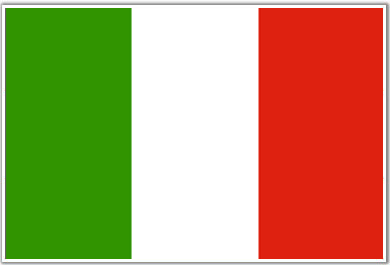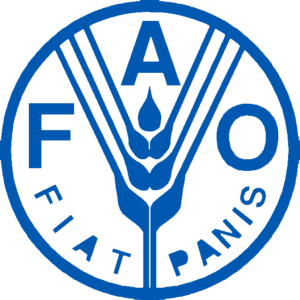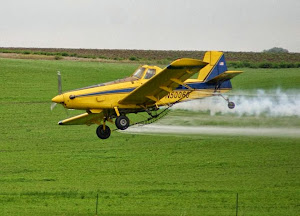Chapter 10. The Global Land Rush
Between 2007 and mid-2008, world grain and soybean prices more than doubled. As food prices climbed everywhere, some exporting countries began to restrict grain shipments in an effort to limit food price inflation at home. Importing countries panicked. Some tried to negotiate long-term grain supply agreements with exporting countries, but in a seller’s market, few were successful. Seemingly overnight, importing countries realized that one of their few options was to find land in other countries on which to produce food for themselves. 1

Looking for land abroad is not entirely new. Empires expanded through territorial acquisitions, colonial powers set up plantations, and agribusiness firms try to expand their reach. Agricultural analyst Derek Byerlee tracks market-driven investments in foreign land back to the mid-nineteenth century. During the last 150 years, large-scale agricultural investments from industrial countries concentrated primarily on tropical products such as sugarcane, tea, rubber, and bananas. 2
What is new now is the scramble to secure land abroad for more basic food and feed crops—including wheat, rice, corn, and soybeans—and for biofuels. These land acquisitions of the last several years, or “land grabs” as they are sometimes called, represent a new stage in the emerging geopolitics of food scarcity. They are occurring on a scale and at a pace not seen before.
Among the countries that are leading the charge to buy or lease land abroad, either directly through government entities or through domestically based agribusiness firms, are Saudi Arabia, South Korea, China, and India. Saudi Arabia’s population has simply outrun its land and water resources. The country is fast losing its irrigation water and will soon be totally dependent on imports from the world market or overseas farming projects for its grain. 3
South Korea, which imports over 70 percent of its grain, is a major land investor in several countries. In an attempt to acquire 940,000 acres of farmland abroad by 2018 for corn, wheat, and soybean production, the Korean government will reportedly help domestic companies lease farmland or buy stakes in agribusiness firms in countries such as Cambodia, Indonesia, and Ukraine. 4
China, faced with aquifer depletion and the heavy loss of cropland to urbanization and industrial development, is also nervous about its future food supply. Although it was essentially self-sufficient in grain from 1995 onward, within the last few years China has become a leading grain importer. It is by far the top importer of soybeans, bringing in more than all other countries combined. 5
India, with a huge and growing population to feed, has also become a major player in land acquisitions. With irrigation wells starting to go dry, with the projected addition of 450 million people by mid-century, and with the prospect of growing climate instability, India too is worried about future food security. 6
Among the other countries jumping in to secure land abroad are Egypt, Libya, Bahrain, Qatar, and the United Arab Emirates (UAE). For example, in early 2012 Al Ghurair Foods, a company based in the UAE, announced it would lease 250,000 acres in Sudan for 99 years on which to grow wheat, other grains, and soybeans. The plan is that the resulting harvests will go to the UAE and other Gulf countries. 7
In tracking this worldwide land grab surge, accurate information has been difficult to find. Perhaps because of the politically sensitive nature of land grabs, separating rumor from reality remains a challenge. At the outset, the increasing frequency of news reports mentioning deals seemed to indicate that the phenomenon was growing, but no one was systematically aggregating and verifying data on this major agricultural development. Many groups have relied on GRAIN, a small nongovernmental organization (NGO) with a shoestring budget, and its compilations of media reports on land grabs. A much-anticipated World Bank report, first released in September 2010 and updated in January 2011, used GRAIN’s online collection to aggregate land grab information, noting that GRAIN’s was the only tracking effort that was global in scope. 8
In its report, the World Bank identified 464 land acquisitions that were in various stages of development between October 2008 and August 2009. It reported that production had begun on only one fifth of the announced projects, partly because many deals were made by land speculators. The report offered several other reasons for the slow start, including “unrealistic objectives, price changes, and inadequate infrastructure, technology, and institutions.” 9
The amount of land involved was known for only 203 of the 464 projects, yet it still came to some 140 million acres—more than is planted in corn and wheat combined in the United States. Particularly noteworthy is that of the 405 projects for which commodity information was available, 21 percent were slated to produce biofuels and another 21 percent were for industrial or cash crops, such as rubber and timber. Only 37 percent of the projects involved food crops. 10
Nearly half of these land deals, and some two thirds of the land area, were in sub-Saharan Africa—partly because land is so cheap there compared with land in Asia. In a careful evidence-based analysis of land grabs in sub-Saharan Africa between 2005 and 2011, George Schoneveld from the Center for International Forestry Research reported that two thirds of the area acquired there was in just seven countries: Ethiopia, Ghana, Liberia, Madagascar, Mozambique, South Sudan, and Zambia. In Ethiopia, for example, an acre of land can be leased for less than $1 a year, whereas in land-scarce Asia it can easily cost $100 or more. 11
Nevertheless, the second-ranking region in land area involved was Southeast Asia, including Cambodia, Laos, the Philippines, and Indonesia. Countries have also sought land in Latin America, especially in Brazil and Argentina. The state-owned Chinese firm Chongqing Grain Group, for example, has reportedly begun harvesting soybeans on some 500,000 acres in Brazil's Bahia state for export to China. The company announced in early 2011 that as part of a multibillion-dollar investment package in Bahia, it would develop a soybean industrial park with facilities capable of crushing 1.5 million tons of soybeans a year. 12
Unfortunately, the countries selling or leasing their land for the production of agricultural commodities to be shipped abroad are typically poor and, more often than not, those where hunger is chronic, such as Ethiopia and South Sudan. Both of these countries are leading recipients of food from the U.N. World Food Programme. Some of these land acquisitions are outright purchases of land, but the overwhelming majority are long-term leases, typically 25 to 99 years. 13
In response to rising oil prices and a growing sense of oil insecurity, energy policies encouraging the production and use of biofuels are also driving land acquisitions. This results in either clearing new cropland or making existing cropland unavailable for food production. The European Union’s renewable energy law requiring 10 percent of its transport energy to come from renewable sources by 2020, for instance, is encouraging agribusiness firms to invest in land to produce biofuels for the European market. In sub-Saharan Africa, many investors have planted jatropha (an oilseed-bearing shrub) and oil palm trees, both sources for biodiesel. 14
One company, U.K.-based GEM BioFuels, has leased 1.1 million acres in 18 communities in Madagascar on which to grow jatropha. At the end of 2010 it had planted 140,000 acres with this shrub. But by April 2012 it was reevaluating its Madagascar operations due to poor project performance. Numerous other firms planning to produce biodiesel from jatropha have not fared much better. The initial enthusiasm for jatropha is fading as yields are lower than projected and the economics just do not work out. 15
Sime Darby, a Malaysia-based company that is a big player in the world palm oil economy, has leased 540,000 acres in Liberia to develop oil palm and rubber plantations. It planted its first oil palm seedling on the acquired land in May 2011, and the company plans to have it all in production by 2030. 16
Thus we are witnessing an unprecedented scramble for land that crosses national boundaries. Driven by both food and energy insecurity, land acquisitions are now also seen as a lucrative investment opportunity. Fatou Mbaye of ActionAid in Senegal observes, “Land is quickly becoming the new gold and right now the rush is on.” 17
Investment capital is coming from many sources, including investment banks, pension funds, university endowments, and wealthy individuals. Many large investment funds are incorporating farmland into their portfolios. In addition, there are now many funds dedicated exclusively to farm investments. These farmland funds generated a rate of return from 1991 to 2010 that was roughly double that from investing in gold or the S&P 500 stock index and seven times that from investing in housing. Most of the rise in farmland earnings has come since 2003. 18
Many investors are planning to use the land acquired, but there is also a large group of investors speculating in land who have neither the intention nor the capacity to produce crops. They sense that the recent rises in food prices will likely continue, making land even more valuable over the longer term. Indeed, land prices are on the rise almost everywhere. 19
Land acquisitions are also water acquisitions. Whether the land is irrigated or rainfed, a claim on the land represents a claim on the water resources in the host country. This means land acquisition agreements are a particularly sensitive issue in water-stressed countries.
In an article in Water Alternatives, Deborah Bossio and colleagues analyze the effect of land acquisition in Ethiopia on the demand for irrigation water and, in turn, its effect on the flow of the Nile River. Compiling data on 12 confirmed projects with a combined area of 343,000 acres, they calculate that if this land is all irrigated, as seems likely, the irrigated area in the region would increase sevenfold. This would reduce the average annual flow of the Blue Nile by approximately 4 percent. 20
Acquisitions in Ethiopia, where most of the Nile’s headwaters begin, or in the Sudans, which also tap water from the Nile, mean that Egypt will get less water, thus shrinking its wheat harvest and pushing its already heavy dependence on imported wheat even higher. 21
Massive land acquisitions raise many questions. Since productive land is not often idle in the countries where the land is being acquired, the agreements mean that many local farmers and herders will simply be displaced. Their land may be confiscated or it may be bought from them at a price over which they have little say, leading to the public hostility that often arises in host countries.
In addition, the agreements are almost always negotiated in secret. Typically only a few high-ranking officials are involved, and the terms are often kept confidential. Not only are key stakeholders such as local farmers not at the negotiating table, they often do not even learn about the agreements until after the papers are signed and they are being evicted. Unfortunately, it is often the case in developing countries that the state, not the farmer, has formal ownership of the land. Against this backdrop, the poor can easily be forced off the land by the government. 22
The displaced villagers will be left without land or livelihoods in a situation where agriculture has become highly mechanized, employing few people. The principal social effect of these massive land acquisitions may well be an increase in the ranks of the world’s hungry.
The Oakland Institute, a California-based think tank, reports that Ethiopia’s huge land leases to foreign firms have led to “human rights violations and the forced relocation of over a million Ethiopians.” Unfortunately, since the Ethiopian government is pressing ahead with its land lease program, many more villagers are likely to be forcibly displaced. 23
In a landmark article on African land grabs in the Observer, John Vidal quotes an Ethiopian, Nyikaw Ochalla, from the Gambella region: “The foreign companies are arriving in large numbers, depriving people of land they have used for centuries. There is no consultation with the indigenous population. The deals are done secretly. The only thing the local people see is people coming with lots of tractors to invade their lands.” Referring to his own village, where an Indian corporation is taking over, Ochalla says, “Their land has been compulsorily taken and they have been given no compensation. People cannot believe what is happening.” 24
Hostility of local people to land grabs is the rule, not the exception. China, for example, signed an agreement with the Philippine government in 2007 to lease 2.5 million acres of land on which to produce crops that would be shipped home. Once word leaked out, the public outcry—much of it from Filipino farmers—forced the government to suspend the agreement. A similar situation developed in Madagascar, where a South Korean firm, Daewoo Logistics, had pursued rights to more than 3 million acres of land, an area half the size of Belgium. This helped stoke a political furor that led to a change in government and cancellation of the agreement. 25 More













